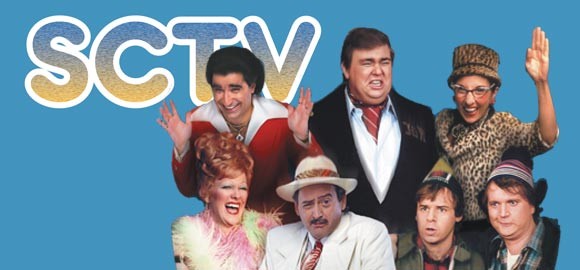
Canadian content
Canadian content
February 15, 2016
While the United States is the entertainment capital of North America, Canada, our neighbor to the north, has had its share of music, television, and movie exports. In Canadian Content, these will be explored.
The Saddest Music in the World
The Great Depression is rarely seen as a source for comedic fodder. Save for the Coen Brothers’ O Brother, Where Art Thou?, I am pressed to find a funny movie set in the era. Then I watched Winnipeg director/writer Guy Maddin’s The Saddest Music in the World. While it is not a comedy in the strictest sense, there is a humor present that cannot be exactly pinpointed. Maybe it is the ridiculousness of the plot: A Canadian beer company sponsors a contest to see, in all the Great Depression, which country has the saddest music, hoping that the publicity would boost their sales to American bootleggers. Perhaps it is the performances, most notably Mark McKinney’s as a Winnipeg native who rejects his Canadian roots after moving to New York to be in show business, a character who oozes sleaze. Or maybe, it is a comedy simply because it cannot be a drama, that what takes place in the film is simply too far-fetched, too strange, to possibly be taken seriously. There is one thing that is for sure: The Saddest Music in the World is absolutely the most unique movie I have ever seen.
The Saddest Music in the World is absolutely the most unique movie I have ever seen.
— Rebecca Benson
This was the first film by Guy Maddin I have seen, and I was completely unfamiliar with his incredibly individual style. The movie was shot on old 8mm and 16mm film stock, primarily black and white, with brief flashes to color, giving it the appearance of actually being filmed in the 30s. The editing is choppy, which works with the slightly jumpy narrative, making the film feel almost like a collage. At first, the story seems like it has too many strings, that there is too much going on, but this makes it all the more effective when all the pieces come in place, and all the strings work together to weave an absolutely bizarre cloth about exploitation, memories, love, and show business.
Guy Maddin’s style may not be for everyone, and admittedly I did not like it at first either. After viewing, however, I grew to love Maddin’s method, and cannot picture his stories playing out any other way. The Saddest Music in the World is often considered Maddin’s best work, and is a good starting point for anyone not familiar with his films, or anyone who likes their comedy layered and slightly absurd.

press release from creative commons
The cast of SCTV
On the air, just barely
When looking at Canada’s impact on pop culture, it is impossible to ignore Second City Television, more commonly referred to as SCTV. The sketch comedy show, which premiered in 1976, was one of the first TV shows syndicated in the United States that was solely Canadian. Because of this, and the fact that it was really, really good, the show was a huge inspiration to wanna-be comics everywhere, particularly Canadian ones, proving that relocation to the States was not necessary to have a successful, and funny, show.
While being technically a sketch comedy show, SCTV was more a parody of television in general, which the sketches not just being premises, but rather comprised mostly of ads for fake products and TV and movie parodies. The cast of the show came from the stage of the renowned Second City comedy theater, which at the time had branches in Chicago and Toronto, and included soon-to-be comedy greats John Candy, Eugene Levy, Andrea Martin, Catherine O’Hara, Rick Moranis, and Martin Short, as well as Harold Ramis, Joe Flaherty, and Dave Thomas. SCTV first aired in the States after Saturday Night Live, meaning viewers would have to stay up until 2AM to watch it, and while it never got the following SNL did, it gained a large cult audience, and many of today’s comics site it as one of their main influences.
The SCTV sketch that was most popular in the United States was, ironically, a bit that was originally only shown on Canadian airwaves. The Canadian Broadcast Company requested that two minutes of the show be dedicated to “Canadian content”. Because there were fewer TV ads in Canada, there was only time for this patriotic content in Canada. The result was The Great White North, a series of sketches that starred Rick Moranis and Dave Thomas, and parodied stereotypical Canadian life. Bob and Doug McKenzie, the characters the sketches followed, became so popular that they were edited into the American episodes, where their popularity skyrocketed, resulting in a McKenzie Brothers album that topped the charts in Canada and reached #8 in the United States. In 1981, Moranis and Thomas wrote, directed, and starred in Strange Brew, a full-length feature movie loosely based off of Hamlet that featured the brothers.
Despite its cult following, SCTV never garnered enough viewership to be truly successful. The show switched time slots, nights, and even networks, was cancelled and brought back on the air twice, and eventually ended for good in 1984 after six seasons. Fortunately, the show’s influence did not end with it, as it is still cited as one of the best sketch comedy shows of all time.
